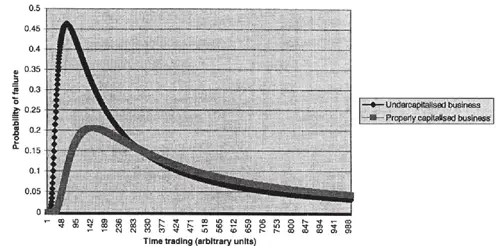Many factors play a role in the success or failure of a small business, but how can these factors be assessed across business types and how do we identify which ones are key? In previous articles we have addressed how businesses can compete relative to one another but here we will dig into the key factors that permit start-up and long-term success.
Through the 80s, as the study of entrepreneurs and small businesses became more prevalent, it was recognized that a formal structure to describe venture creation would be helpful. William B. Gartner in his 1985 work ‘A Conceptual Framework for Describing the Phenomenon of New Venture Creation’ set out to establish such a structure.
The goal is to identify the specific variables that describe how each new venture was created, in order that meaningful contrasts and comparisons among new ventures can be made.” (Gartner 1985, 701)
As Gartner puts it
The framework integrates four major perspectives in entrepreneurship: characteristics of the individual(s) who start the venture, the organization which they create, the environment surrounding the new venture, and the process by which the new venture is started.” (Gartner 1985, 696)
Gartner’s first category the “individual” includes characteristics such as the need for achievement, locus or control, risk taking propensity, work experience, age, and education.
The “organization” is the entity that is created and consists of the product or service, the customer contracts, licensing, focus, and resource usage.
The “environment” is the external conditions outside the ventures scope of influence. Environmental factors include the available capital, skilled labor force, market accessibility, living conditions, and availability of supplies.
Lastly the “process” is the behavior and activities of the individual. Examples of process would be finding a business opportunity, gathering resources, making the product, or marketing.
This framework provides a common ground to compare the primary factors at a venture’s creation to the factors that play a role in the overall success. You will be suprised to find they are quite different.
Key Start-up Success Factors
The application of Gartner’s framework upon business startup was conducted by Marco Van Gelderen when he used the framework to assess the relative importance of factors in successfully getting a venture started. (Van Gelderen 2006). The empirical study followed 512 entrepreneurs over the course of three years and determined that there were three primary contributing variables in the startup phase.
The first factor he found to be associated with startup success was the perceived risk of the market. In other words Individuals may or may not start a business given their perception of the risk associate with the venture. Van Gelderen points out that the actual risk may not be the same as the perceived risk but argues that a lower perceived risk will result in an earlier start to a venture. Risk or perceived risk of the market would be considered by Gartner to be an environmental condition.
The second factor associated with success at startup was found to be starting full time verses starting part time. Van Gelderen noted that starting part time is less risky but is also a sign of lower commitment. Starting full time assumes more risk but is also a sign of greater commitment. Individuals who started full time with a greater commitment are more likely to get their venture off the ground. Within the scope of Gartner’s frame work this would fall under the banner of an organizational factor.
The last factor Van Gelderen cites is the early capital requirements. Van Gelderen noted that those who lower their capital requirements increase their chances of getting started while those who intend to use more startup capital have a lower probability of getting their business running. Capital requirements would be considered by Gartner to be an environmental factor.
To summarize Van Gelderen’s findings in terms of Gartner’s framework, the primary success factors associated with getting a business started are (1) the perceived risk of the market, an environmental factor (2)starting full time verses starting part time, an organizational factor (3) the initial capital requirements, an environmental factor.
Key Long-term Success Factors
Once a venture has started the dynamics change and the factors that played a role at startup are no longer the primary concern. The study entitled ‘Why do Most Firms Die Young?’ by Robert Cressy develops a model to address the factors that contribute to success and failure in the first few years of operation and illustrates the exposure to risk through the life of a business. (Cressy 2006,111)
Cressy defined the primary variables associated with life time failure probability to be managerial capital(Human Capital), financial capital, entrepreneurial risk aversion, and the decision on market positioning. Using these factors Cressy created a theoretical model to illustrate the risk distribution over the lifetime of a venture. His resulting distribution indicated that the peak of risk exposure exists within the first 18-24 months and then tapers off through the remaining life of the venture. The study also suggested that the appropriate initial startup capital, both financial and managerial, will delay and minimize the overall exposure a venture will face. Cressy’s distribution is illustrated in figure 5.
Cressy, R., 2006, ‘Why do Most Firms Die Young?’
Small Business Economics 26, 103-116.
Figure 5
Applying Gartner’s framework to Cressy’s findings the primary factors can be categorized as follows (1) managerial capital, an individual factor (2) financial capital, and environmental factor(3) risk aversion, an individual factor (4) market positioning, a process factor.
Startup Vs. Long-term Success Factors
Comparing the results of Cressy’s study to the results of Van Gelderen’s shows the difference between the key factors in startup and long-term success. Table 1 illustrates the comparison.
| Gartner’s Framework |
Pre Startup Success |
Long-term Success |
|
Individual |
II |
|
|
Organization |
I |
|
|
Environment |
II |
I |
|
Process |
I |
Table 1. Success factors and Gartner’s Framework
From the studies we can make the following observations.
- Long-term success is a function of four primary factors whereas startup success is a function of three.
- The environment is the only factor that is considered in both startup and long-term success.
- The specific environmental condition that existed in both cases was financial capital requirements.
- The environment is the single biggest contributing factor associated with starting a venture.
- The individual is the single biggest contributing factor associated with long-term success.
This paints quite a picture, not only do the factors change from the startup to the long-term but long-term success is dependent on one more factor than startup. Additionally the individual is considered to be a large part of what makes a venture succeed but is not a primary factor at startup. This discontinuity between primary startup factors and long-term factors along with the high failure rate together imply that it may be easier to get a business started than it is to make a business successful.
Could such a high small business mortality rate be due to the ease of getting a business started vs. the ease of making a business successful? What we do know is that the largest factor involved in long-term success is not required at startup and that the individual and financial capital requirements will always be a concern.


Leave a Reply